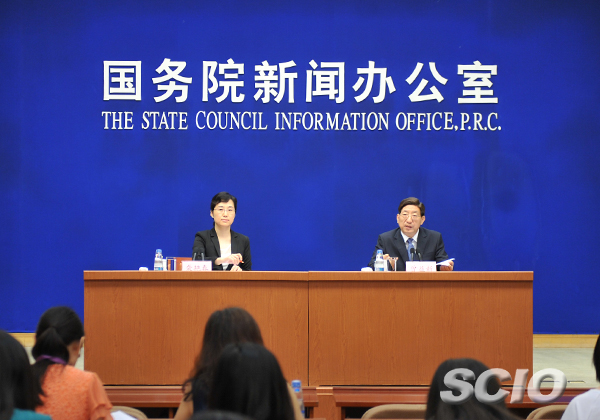Guideline issued to ease shortages of medicine
Online monitor network set to ensure supplies do not run out
China has launched a multidepartmental effort to deal with occasional shortages of some prescription drugs for patients, the State Council Information Office said on June 28.
|
|
|
Zeng Yixin, deputy head of the National Health and Family Planning Commission, speaks at a press conference held by the State Council Information Office on June 28. [Photo/China SCIO] |
A guideline to improve the supply to prevent shortages was issued on Wednesday by nine government agencies, including the National Health and Family Planning Commission, the National Development and Reform Commission, and the Ministry of Human Resources and Social Security.
China has about 3,000 drugs approved for common clinical use, with 130 of them occasionally in short supply, according to Zeng Yixin, deputy head of the National Health and Family Planning Commission.
"That's mainly due to the market gap between supply and demand," Zeng said.
"Thanks to joint efforts by all stakeholders, 50 of the 130 drugs are seeing normal supply levels again," he said, adding that the latest guideline requires interdepartmental cooperation.
"It aims to ensure that the drugs are available-and safe-for people," he said. "It helps coordinate the drug supply system with reforms in medical care and health insurance."
Earlier reports said lower-priced drugs with relatively low clinical demand usually run out of stock, seriously undermining medical options and risking patients' lives.
Under the new guideline, an online drug consumption monitoring network will be set up to determine which drugs might run out and issue timely warnings about emerging needs so that the authorities can intervene.
The guideline calls for the creation of a cross-province coordinating system to alleviate regional shortages of certain drugs.
"Usually, the list of the drugs in short supply is dynamic," said Mao Ningying, associate professor at China Pharmaceutical University, adding that "the government should figure out why and provide targeted intervention".
Zeng said a nationwide drug monitoring network will help forecast consumption trends and potential supply gaps, which will buy time for intervention.
For certain drugs, consumption is difficult to forecast, he said, adding, "We are setting up a regular stocking mechanism".
He cited pralidoxime chloride as an example. The drug has been used to treat patients with pesticide poisoning who have attempted suicide.
"It's hard to predict suicides, but we have to stock the drug to save lives," he said.
For drugs in short supply nationally, Zeng said, emergency imports will be arranged. If that doesn't work, "the authorities will assign selected drug companies to produce more", he added.
